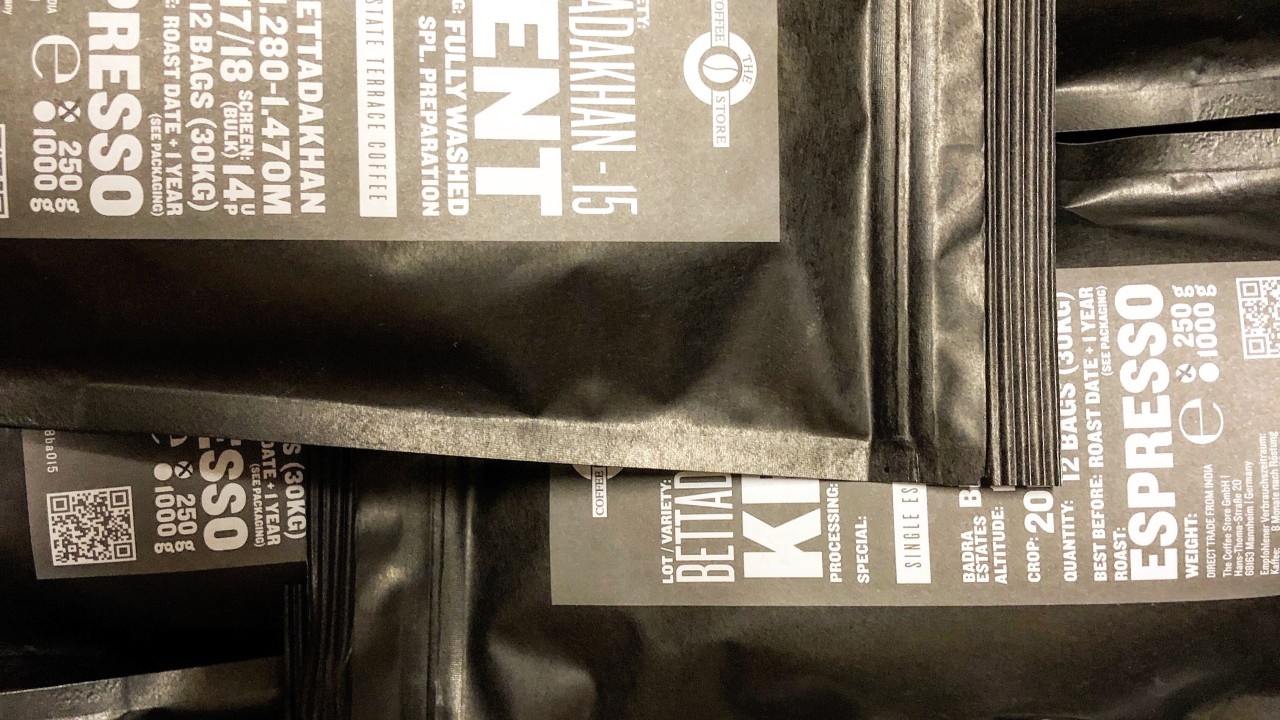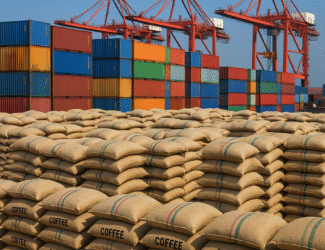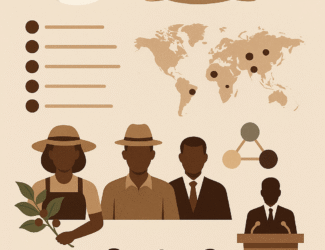
How Digitalisation Is Transforming the World of Coffee — From Bean to Brew
by Dr. Steffen Schwarz, Coffee Consulate
In today’s connected kitchens, a single tap on a smartphone can activate a grinder, ignite a kettle, and tailor a brewing profile with precision. Within seconds, a notification pings: Brew ready in 1:25 – enjoy your washed Castillo from Nariño. What once relied on hands-on craftsmanship now operates through embedded algorithms and automated routines. This isn’t the future of coffee — it’s the present.
Over the last decade, the coffee industry has quietly embraced a digital transformation, distinct from the flashy world of food delivery apps or robotic kitchens. The evolution has taken root through less visible, yet powerful technologies: sensors, interfaces, cloud-based systems, and integrated data flows. From farm to café to home, the role of technology is reshaping how coffee is purchased, prepared, experienced — and ultimately valued.
A New Era for Coffee Consumers
For home brewers, the impact is tangible. Smart machines linked to mobile apps, adaptive grinders that learn user habits, and subscription services guided by consumption analytics have redefined the at-home coffee experience. Users no longer need deep expertise to achieve consistent quality. The tools themselves carry embedded knowledge. Brewing has become interactive, intuitive — and increasingly personalised.
Technology doesn’t just execute a task; it interprets preferences. It empowers consumers to engage with coffee on new levels, blending convenience with sophistication. The result is a shift in the role of the coffee drinker: no longer passive, but informed and in control.
Digital Efficiency in Cafés
In commercial settings, digitalisation is enhancing consistency and scalability. Cafés now utilise cloud-based recipe databases, tablet order management systems, automated tampers, and remote telemetry for real-time quality control. These tools allow multi-location operations to standardise recipes, monitor grinder calibrations, and track extraction variables — all from a central hub.
The benefits are clear: more consistent beverages, fewer errors, and time saved for baristas to focus on customer engagement. However, with automation comes rising expectations. Guests expect flawless experiences, precise replication of their favourite drinks, and recognition of their preferences — all of which depend on the café’s digital competency.
Farm-Level Innovation and Visibility
The digital shift is also unfolding at origin, often without headline attention. Traceability platforms are increasingly available to farmers, enabling real-time recording of harvest volumes, drying data, moisture levels, and export tracking. A QR code scanned in Berlin might retrieve detailed logs uploaded from a remote hilltop cooperative in Rwanda.
More than a logistical upgrade, this transparency empowers producers. With verifiable data, they can demonstrate consistency, validate quality, and forge direct relationships with roasters. In doing so, they gain leverage within a supply chain that has long been opaque and imbalanced.
A Digital Divide with Real Consequences
Yet, this transformation is not equally accessible. Infrastructure gaps, language barriers, and unequal access to training risk deepening the divide between those who benefit from digital tools and those left behind. While some producers build global-facing digital brands, others still rely on notebooks in areas with unstable electricity.
As the coffee sector moves forward, this digital asymmetry raises concerns about fairness and inclusion — especially in a trade where equity and sustainability are already under scrutiny.
Data as the New Currency
Across the supply chain, one constant is emerging: data. Roasters monitor roast curves, cafés track behavioural trends, machines log usage, and consumers input variables from brewing methods to mood correlations. Coffee has become quantifiable in unprecedented ways.
This wave of information offers opportunities for precision and personalisation. But it also raises the risk of reductionism — of valuing only what can be measured. Sensory elements, human interaction, and the intangible rituals of coffee drinking resist digital codification. In our drive for optimisation, we must take care not to erode the emotional and cultural value that defines coffee.
The Role of Applied Coffee Science
Technology alone cannot deliver quality. Sensor data is only useful when grounded in a deep understanding of coffee science — from solubility to terroir. Moisture charts, temperature readings, and extraction metrics require context, interpretation, and sensory alignment. Without this foundational knowledge, digital tools risk becoming superficial.
It is here that applied coffee science plays a vital role, ensuring that data enhances — rather than overshadows — the human craft behind each cup.
Designing a Fair and Human-Centric Future
Ultimately, digitalisation should enhance relationships — between producers and buyers, baristas and customers, humans and the beverage itself. But that outcome requires intentionality. Digital platforms must be inclusive. Data ownership must be shared fairly. Systems must serve the coffee value chain — not dominate it.
The future of coffee will not be offline. Nor should it be. But it must remain human at its core.
As technology becomes ever more present in how we buy, brew, and belong in coffee culture, the key questions remain: Who benefits? How is value shared? And how do we ensure the soul of coffee isn’t lost in the system that supports it?
Coffee has always connected people. Today, it connects systems too. The task before us is to ensure those connections remain transparent, equitable, and deeply human.






